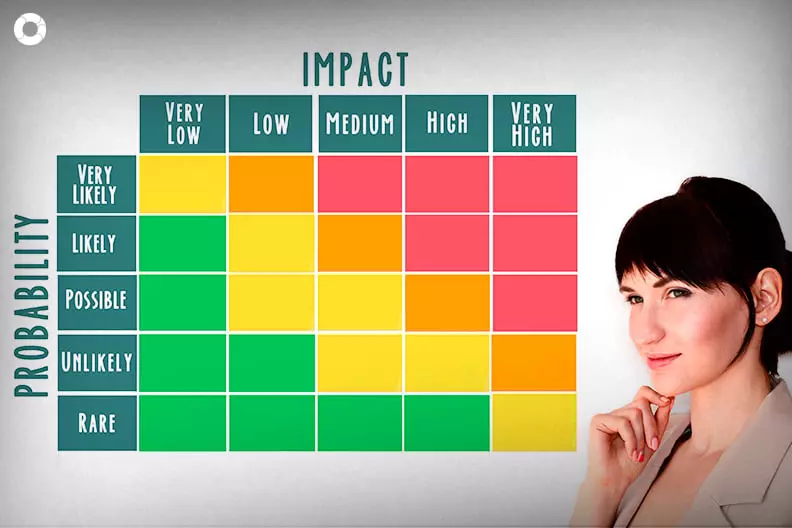Step-by-Step Guide: How to Create a Risk Matrix
Discover how to create a risk matrix with this step-by-step guide and effectively manage risks in your business.
Understanding the Importance of a Risk Matrix
A risk matrix is a valuable tool for businesses to assess and manage risks effectively. It provides a visual representation of the likelihood and impact of potential risks, allowing organizations to prioritize their risk mitigation efforts. By using a risk matrix, businesses can identify and address potential threats and vulnerabilities, reducing the likelihood of negative impacts on their operations.
One of the key benefits of a risk matrix is that it helps businesses make informed decisions about risk management. By assigning risk ratings and scores to different risks, organizations can prioritize their resources and focus on addressing the most critical threats. This enables businesses to allocate their time, budget, and effort effectively, maximizing their risk management efforts and minimizing potential losses.
Additionally, a risk matrix promotes transparency and communication within an organization. By visualizing risks and their potential impacts, it becomes easier for different stakeholders to understand and discuss potential risks. This facilitates collaboration and ensures that everyone involved is on the same page when it comes to risk management strategies and actions.
Overall, a risk matrix is an essential tool for businesses of all sizes and industries. It provides a structured approach to risk assessment and management, allowing organizations to make informed decisions, allocate resources effectively, and minimize potential losses.
Defining the Components of a Risk Matrix
To create a risk matrix, it is important to understand its key components. These components include:
1. Risk Categories: The first step in creating a risk matrix is to identify and define the different risk categories that are relevant to your business. Common risk categories include financial risks, operational risks, legal risks, and reputational risks. By categorizing risks, businesses can ensure comprehensive risk assessment and management.
2. Likelihood: Likelihood refers to the probability of a risk event occurring. It can be assessed using qualitative or quantitative measures. Qualitative measures use descriptive terms like 'low,' 'medium,' or 'high,' while quantitative measures assign numerical probabilities.
3. Impact: Impact refers to the potential consequences or severity of a risk event. It can be assessed using qualitative or quantitative measures. Qualitative measures use descriptive terms like 'low,' 'medium,' or 'high,' while quantitative measures assign numerical values.
4. Risk Ratings: Risk ratings are determined by combining the likelihood and impact of a risk event. These ratings help prioritize risks and determine the appropriate risk management strategies. Common risk rating scales include 3x3, 4x4, and 5x5 matrices.
By defining these components, businesses can create a comprehensive risk matrix that effectively assesses and manages risks.
Step 1: Identify and Assess Risks
The first step in creating a risk matrix is to identify and assess potential risks. This involves conducting a thorough analysis of your business operations, processes, and external factors that may pose risks. Some common methods for identifying risks include brainstorming sessions, conducting risk assessments, and analyzing historical data.
Once risks have been identified, it is important to assess their likelihood and impact. This can be done through qualitative or quantitative methods. Qualitative methods involve expert judgment, while quantitative methods use historical data and statistical models to assign numerical values. By assessing risks, businesses can prioritize their efforts and allocate resources effectively.
Step 2: Determine Risk Impact and Probability
After identifying and assessing risks, the next step is to determine the impact and probability of each risk event. This involves evaluating the potential consequences or severity of a risk event (impact) and the likelihood of its occurrence (probability).
To determine impact, businesses can consider factors such as financial losses, operational disruptions, reputational damage, and legal consequences. The impact can be assessed using qualitative or quantitative measures.
To determine probability, businesses can use historical data, industry benchmarks, expert opinions, and statistical models. The probability can be assessed using qualitative or quantitative measures as well.
By determining the impact and probability of each risk event, businesses can assign appropriate risk ratings and prioritize their risk management efforts.
Step 3: Assign Risk Ratings and Scores
The final step in creating a risk matrix is to assign risk ratings and scores to each identified risk. Risk ratings are typically determined by combining the likelihood and impact of a risk event.
Common risk rating scales include 3x3, 4x4, and 5x5 matrices. These matrices categorize risks into different levels of severity, such as low, medium, and high. The specific criteria for each rating level may vary depending on the organization and industry.
In addition to risk ratings, businesses can assign numerical scores to each risk event. These scores help quantify the overall risk level and prioritize risks accordingly. Higher scores indicate higher risks that require immediate attention and mitigation.
By assigning risk ratings and scores, businesses can effectively prioritize their risk management efforts and develop appropriate risk mitigation strategies.
Go to the next level with Pirani
You May Also Like
These Related Stories

Crafting Risk Management Plan: Step-by-Step Guide

Steps to implement a risk management system

5 steps for financial risk analysis

Steps to develop an AML risk management matrix

Risks in the outsourcing of services



Comments (2)